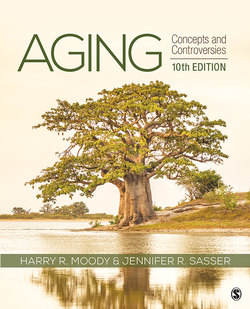Читать книгу Aging - Harry R. Moody - Страница 46
На сайте Литреса книга снята с продажи.
Religion and Spirituality
ОглавлениеAccording to recently published Gallup data, 72% of U.S. adults consider religion to be important in their lives; 50% are affiliated with a church, mosque, or synagogue; and 38% attend services weekly (Brenan, 2018b; Jones, 2019). It is worth noting that each of these figures has shown a declining trend over the past two decades, consistent with findings from the Pew Research Center that Americans are becoming less religious. Interestingly, 90% of older adults surveyed for the 2012 Pew Research Center’s Religion and Public Life Project indicated that they are “religiously affiliated.” For comparison, 67% of adults ages 18 to 29 report being “religiously affiliated,” perhaps an example of a cohort difference. On the one hand, it seems natural to expect that interest in religion might increase with advancing age given the association of old age with increased mortality. On the other hand, the continuity theory of aging reminds us that, as people age, they tend to maintain earlier patterns of practice and belief.
But religion is more complicated than responses to a poll or attending a worship service might indicate. To understand the role of religion, we need to distinguish formal religious behavior from subjective attitudes toward religion, what we might call an inner attitude of spirituality. Across many different dimensions, religion and spirituality continue to play vital roles in the lives of older adults and help them find meaning in later life (Atchley, 2009).
